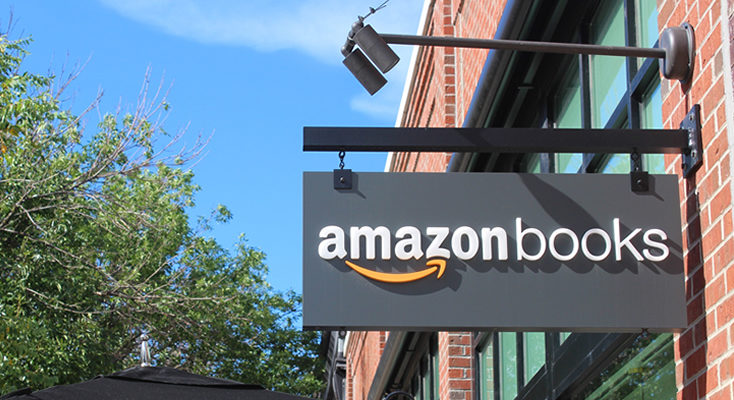Many brick-and-mortar retailers thought the growth of e-commerce would bring about the slow death of physical retail, but recent moves made by Amazon have proven this notion to be false. Through the introduction of two different physical stores, Amazon is showcasing that it’s not about waging war on in-store—it’s about expanding in-store capabilities to create a seamless customer experience that pushes the boundaries of online vs offline.
Representing close to 4% of all online retail sales, it’s no secret that Amazon has conquered the e-retailer space. Surpassing their original vision of being an online book seller, now, they’re setting their eyes on a new channel: in-store. Below are two examples of how Amazon is working to connect the speed and convenience of online capabilities with the interactivity of physical storefronts.
Amazon Go
When e-commerce was first introduced, many thought that computers would eventually take over the need to hire cashiers. With Amazon Go, that belief has become a reality. Amazon’s “Just Walk Out” technology utilizes hundreds of cameras, weight sensors, pressure sensors and computer vision algorithms to allow customers to skip the entire check-out process.
To gain access to the store, you must download the Amazon Go App & sign in with your account. Opening the app and pulling up your account QR code allows you to be scanned through the store gates but unlike other shopping experiences that utilize your smartphone, once inside, your phone can be put away. The cameras in the ceiling grab product information from the barcodes on the product labels. With this product information, as well as the pressure sensors on the shelves, the computer registers what products you have picked up for purchase or placed back if you change your mind. Once done shopping, the sensors in the gates of the store tell the Amazon Go app that your trip is complete, prompting it to generate an itemized receipt, charge the card registered with your Amazon account, and display proof of purchase on-screen.
The system is so advanced that even when reviewers of the “Just Walk Out” technology tried to “shoplift,” the system knew what items were grabbed and charged the customer’s account. This technology has the potential to be sold to other retailers, which is something to keep in mind since Amazon recently purchased Whole Foods. Consumers may be looking at a completely revamped automated system when shopping sooner than we think.
Amazon Books
Amazon played a major hand in the demise of once popular retail bookstores, but is now doubling down and opening physical stores as an extension of their online territory. What’s even more interesting is that the stores are similar to their competitors, but of course with some technical integration.
While books can be delivered right to our devices with a click, many consumers still desire the magic of roaming through bookstores and flipping through pages. The only thing that’s missing from Amazon’s low-price offerings and the ability to choose between a paperback or a copy on your Kindle, is the opportunity to browse and flip through the pages of the book that might be next on your reading list. With the opening of 15 Amazon Book locations thus far and more to come, Amazon is re-introducing this timeless experience by using localization and “if you like this” algorithms to make display decisions. Because of this, Amazon Books has a smaller amount of books than you would find in your local Barnes & Noble. Instead of seeing hundreds of bindings across the shelves, books are face-forward with reviews from other Amazon customers found directly below the book. If the customer is interested in the book, they can scan the barcode to find the price.
The bookstores main goal isn’t to try to expand the sale of physical books though, as they showcase digital alternatives on the same shelves as the hardcovers. Instead, these locations are intended to serve as extensions of the Amazon brand, offering new layers of consumer experience value and expanding Prime membership.
Amazon is the first e-commerce giant to expand their presence into in-store, making the statement that even online retailers need to find the balance of an omnichannel customer experience. It’s no longer a competition between online vs. in-store–it’s about bridging the two in ways that bring the unique value of both to the forefront.


Comments are off this post